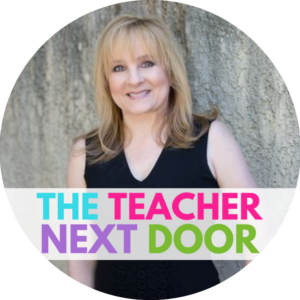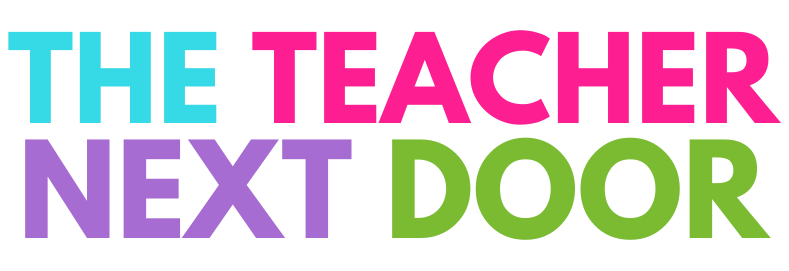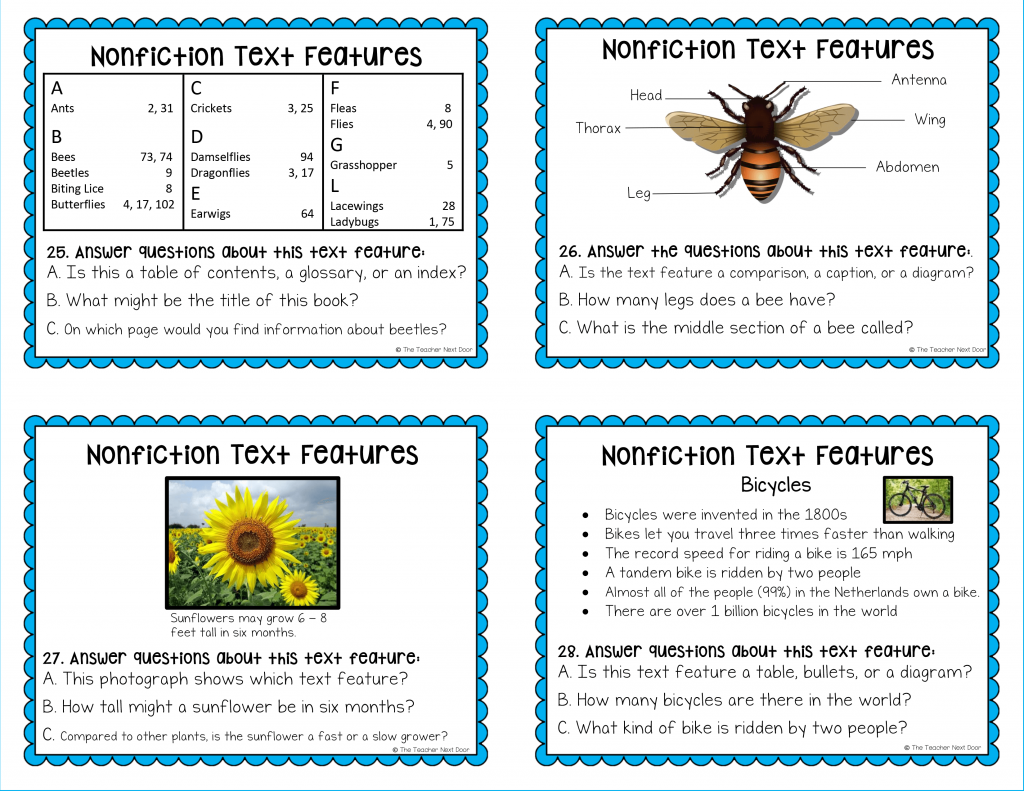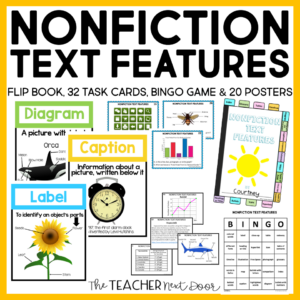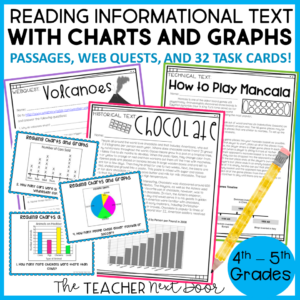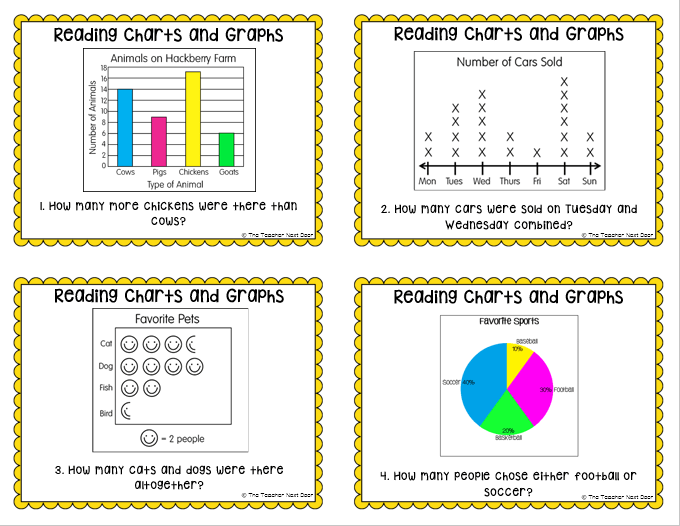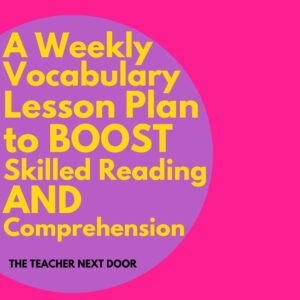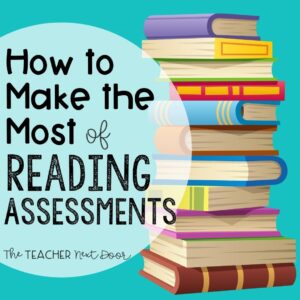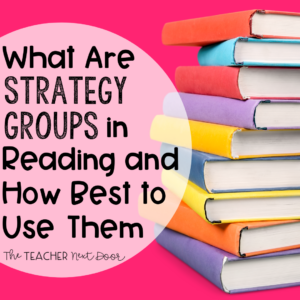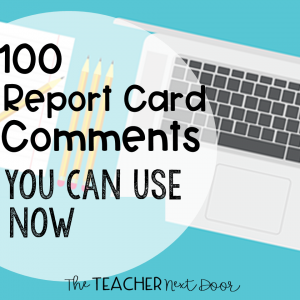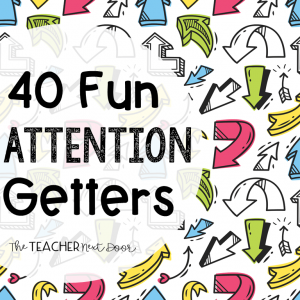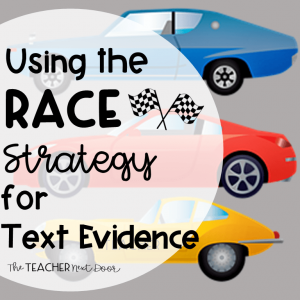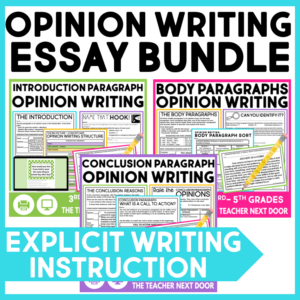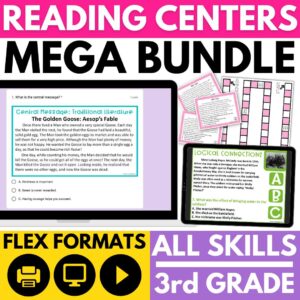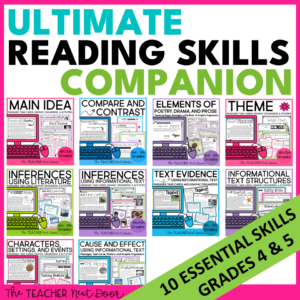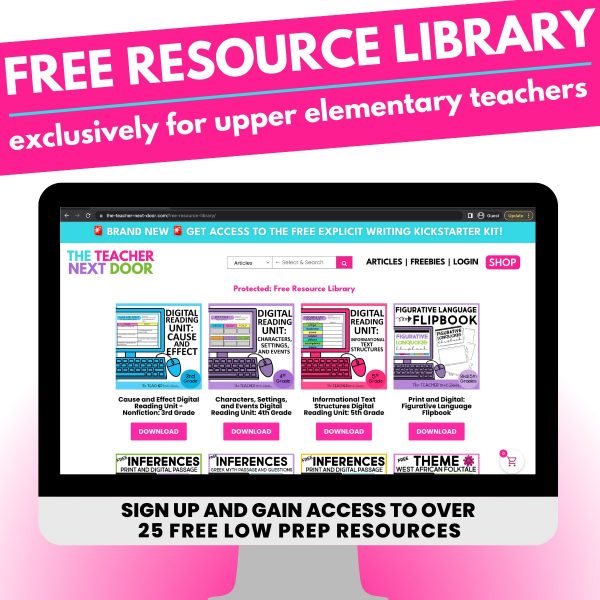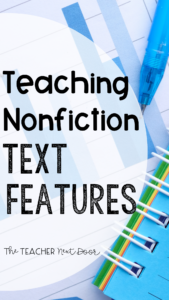
I really think teaching nonfiction text features is a lot of fun!
It’s not as abstract of a concept as many reading skills may be and it gives my students the same kind of feeling that my own kids had when we took long road trips and played the license plate ABC game. The fun is in the search!
Like anything else, there are lots of ways to teach nonfiction text features, but I’ll share what I like to do in this post.

1. To start this unit, we discuss the differences between fiction and nonfiction.
Before you can directly teach nonfiction text features, the kids need to be able to distinguish between fiction and nonfiction.
I like to start by having the kids help me brainstorm as we create an anchor chart listing the characteristics of each. Of course, I have the key characteristics I want them to mention and prod them along where needed.
A good second-day review is to give your students a Venn diagram and have them work in pairs to review this information. All of this prep work is to lead kids to the conclusion that nonfiction (real life, “not fake”) is very different from fiction (creative story, “fake” – starts with an F like fiction…) and has a number of different features which are used to help the reader understand and visualize the concepts more fully.
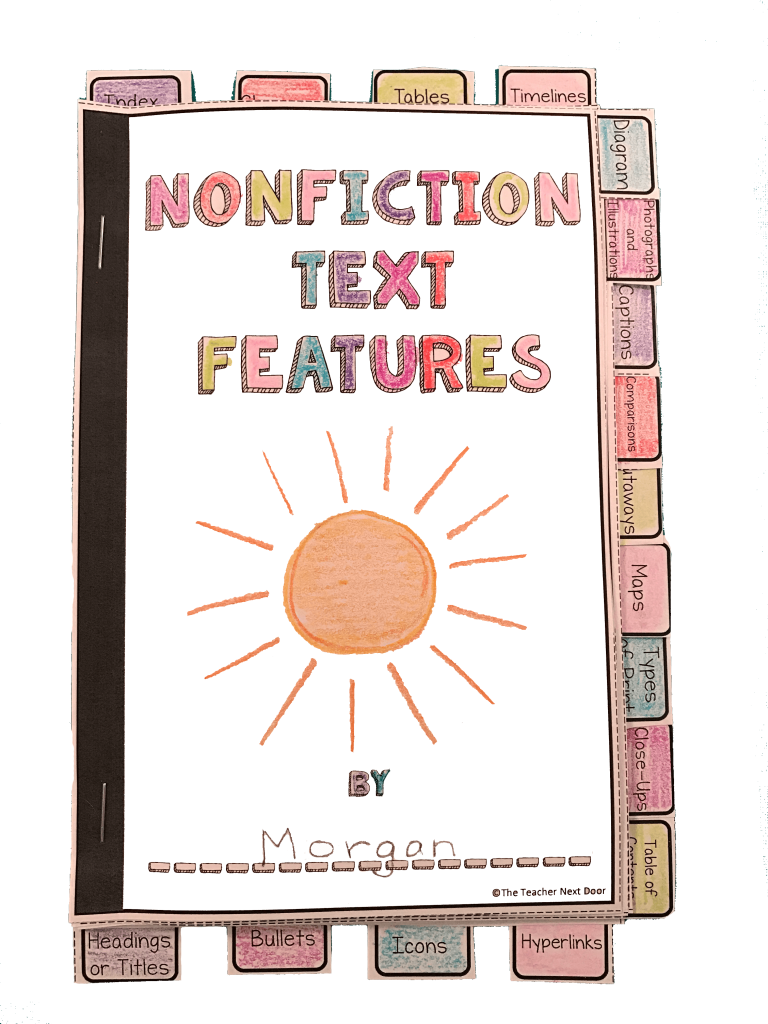
2. Introduce One or Two Text Features Each Day
Now that students understand what nonfiction is, it’s time to examine each text feature together.
The day before the lesson, I search through my classroom library and add in books from the school library and tag good examples of text features with sticky notes, so I’m ready for the next day’s lesson.
On the lesson day, I teach one or two specific text features by using the real nonfiction books that I have tagged, as well as the posters (see below). As I describe each text feature, I like to project the examples from real books/magazines on my document projector, so everyone can see them well.
Once the kids understand the concepts, we do a mini-scavenger hunt as they take out their science books and browse through them in search of the specific example we are targeting. They are usually pretty excited to find so many examples of the nonfiction text features and the little competitive souls (you know who they are) really get into this!
To finish the lesson, the kids fill out the page or two in their flipbooks (either a simple copy paper folded and stapled booklet or the fancier flip booklet I use today) and kids draw examples of the text feature in these booklets. I allow them to make up their own examples for these pages or to use ones that they’ve found in their science book or from a real nonfiction book.
Besides the flipbook, I have a set of posters with pictures of each text feature that I like to have on display in the classroom. You could put them up one at a time as you teach each one but I usually just have them all on a bulletin board and then refer to them as we go along.
3. Task Cards
Once we have introduced all of the text features, I take out my set of task cards for this unit. I think by now I have task cards for just about each standard that I teach because they give kids so much focused practice and students still see them as a “game”, so they really enjoy using them.
If you run reading centers, task cards are great for this of course, or you can place them around the room and give kids clipboards and a buddy to record their answers on the record sheet as they walk around finding the cards.
Since I usually have 4th/5th graders, we correct these together when they’re finished and they get instant feedback on how well they did.
A great way to make extra task cards is to use examples from science magazines or Weekly Readers, which are full of text features.
4. Bingo
Another way I reinforce text features is to play a Nonfiction Text Features Bingo as a class. I pass out cardstock (laminated) Bingo cards, as well as buttons for markers (you could also use mini-erasers, beans, math cubes, plastic disks, or even small pieces of paper) and we play the game several times together.
I have a prize box of random treasures (aka junk) for the winners and I do include a few simple no-cost coupons in the prize box, that I printed with prizes like a homework pass, choose a class game, sit with a friend, wear socks in the classroom, 15 minutes of computer time during morning work, and so on.
Another way I like to use my Bingo cards is to set these aside for a parent volunteer (or a trusty student helper) to use one on one with any students who need extra help. They’re really a great way to provide a quick review.
5. Follow Up or for Fast Finishers
I love to have a few easy but effective ideas on hand for a whole class review and for the few fast finishers who need some enrichment.
One easy project is to take old science magazines like National Geographics (I would pre-screen these for iffy pictures), Ranger Ricks, Scholastic Magazines, or Weekly Readers and have kids cut out examples of each nonfiction text feature that they find. The kids then glue on their examples to large pieces of construction paper, anchor chart posters, or a sectioned off bulletin board, with nonfiction text feature headings.
Another idea I really love and the kids enjoy is to have a Scavenger Hunt with small teams of 3 – 4 kids. I give each group sticky notes and a basket of nonfiction books and let them place sticky notes with the text feature’s name on each text feature example they find, with a point for each one they find.
The game’s goal is to see who can find the most text features in a set number of minutes. Before we announce the winner, I have groups exchange baskets and “check” the other team’s answers for accuracy, which also gives them one more opportunity to practice this skill (sneaky, I know!)
Finally, if you’re looking for a ready to go, complete resource to teach nonfiction text features for 2nd – 5th grade, I did create a unit that I love using in my classroom. It comes with the flipbook, task cards, Bingo game, and all of the posters too!
Also, if you teach 4th/5th grade, you might enjoy this Reading with Charts and Graphs, which features lots of engaging passages, and comprehension questions, as well as a set of 32 task cards with charts and graphs (text features!).
Reading Informational Text With Charts and Graphs
If you have 2nd or 3rd grade students, you might be interested in the charts and graphs task cards by themselves.
Hope this unit goes smoothly for you! Happy teaching!
